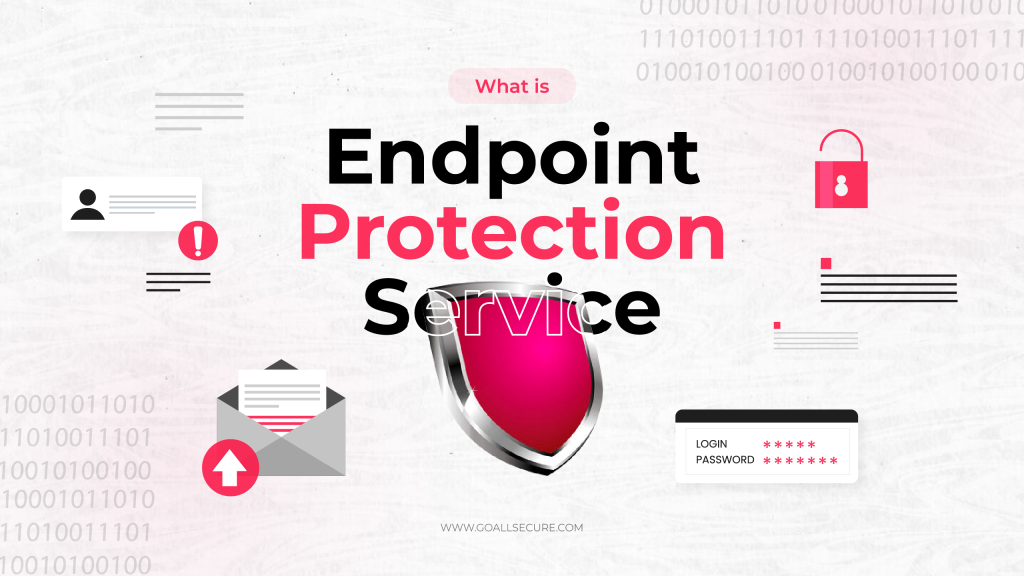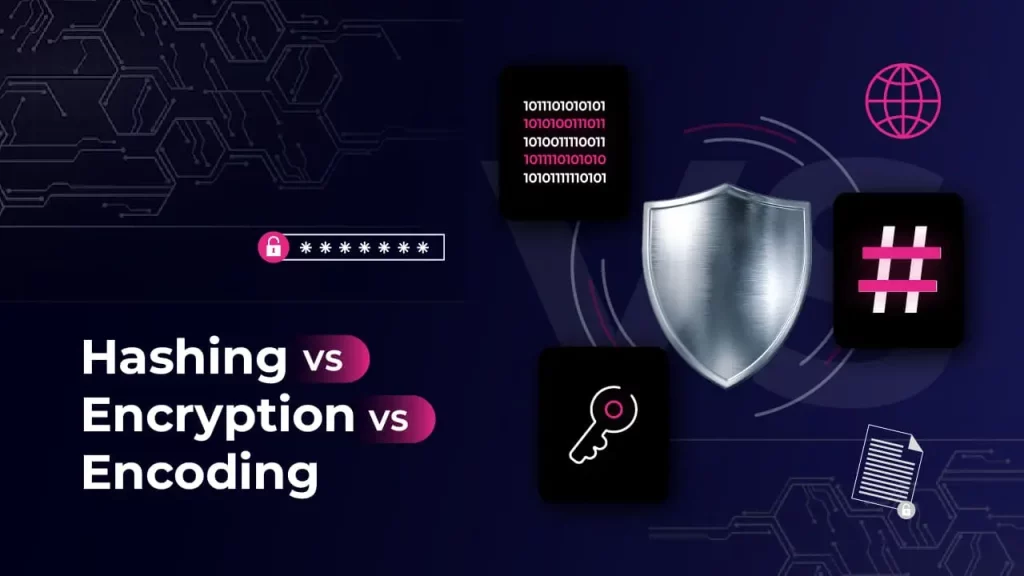Data can easily be referred to as the modern-age equivalent of gold. It is extremely valuable and has to be protected at all costs. Its loss can lead to the fall of governments and even start wars; that is the extent of data’s power. Everyone, especially organisations, is concerned with protecting their data, irrespective of their size. The three most important terms when it comes to data security are hashing, encryption, and encoding. They have been the holy grail for averting cyber breaches and data security. In the blog, we will take a closer look at all three of these concepts and differentiate Hashing vs Encryption vs Encoding based on their usability.
Hashing, Encryption, and Encoding at a Glance
In the ever-shifting realm of digitalisation, data is overflowing with value and needs protection at every point. It holds the power to either categorically improve systems or fire up conflicts that could bring about the end. Data truly is a testament to the potency of information. People and companies alike are grasped by the urge to secure this important possession. In cyber security, hashing, encryption, and encoding are the triumvirate of data security. They are the unrecognised heroes defending your data from cyber foes. This section of the blog will explore these enigmatic custodians of data in a tabular manner, unravelling their intricacies and their differences.
Differences:
| Criteria | Encoding | Encryption | Hashing |
| Purpose | Data format transformation | Data confidentiality | Data integrity verification |
| Reversibility | Reversible with the algorithm | Reversible with the key | Typically irreversible |
| Security | Primarily for data readability | Focus on confidentiality | Focus on preventing collisions |
| Example | Base64, URL encoding | AES, DES, RSA | SHA-256, MD5, SHA-3 |
Similarities:
| Criteria | Encoding | Encryption | Hashing |
| Transformation | Convert data into another form | Convert data into another form | Convert data into another form |
| Application | Used for data format changes | Used in data confidentiality | Used in data integrity checks |
| Output Length Consistency | Variable output size | Variable output size | Fixed output size |
What Is Encryption?
Encryption is the process of converting data (readable to all) into ciphertext (readable only to authorised person) using algorithms and password/ key. Security of one’s data emerges as the master coordinating the transformation of information that was initially laid bare for all eyes. To simply put, encryption is the art of safeguarding privacy. It is done by making it challenging for unauthorised individuals to access the original data. There are two types of encryptions: symmetric and asymmetric. Symmetric encryption uses the singular essential key to encrypt and decrypt data. At the same time, asymmetric encryption uses different keys.
- Purpose: Ensures data confidentiality and privacy.
- Irreversibility: Two-way function; reversible with the correct decryption key.
- Example: AES (Advanced Encryption Standard) is a widely used symmetric encryption algorithm.
Key aspects of encryption in cyber security:
Confidentiality
Sensitive information, such as financial transactions, personal information, etc., is protected by encryption. Even if unauthorised accessibility is somehow cracked, deciphering the data without the proper decryption key remains an elusive quest.
Secure Communication
Data is susceptible to interception while it is in transit, particularly over treacherous stretches of the internet. By weaving a cloak of encoding and decoding at the source and destination, one can enable secure communication.
Storage Protection
Data kept on hardware like hard drives, databases, and other storage media also come under the protective shield of encryption. In the event that the storage tool falls into the incorrect hands, the encrypted information stays in a secure fortress.
Password Security
Instead of relying on the antiquated technique of saving plain-text passwords, systems store encrypted versions. The entered password is encrypted during the authentication process and is compared to the encrypted password that has been stored. This includes an added layer of protection, mitigating dangers associated with compromised saved information.
Blockchain and Cryptocurrencies
File encryption emerges as a keystone in securing the transactions in blockchain. Cryptographic techniques are used by cryptocurrencies like Bitcoin to create safe and transparent financial transactions.
In summary, encryption emerges as an indispensable sentinel in the realm of cyber safety and security, guarding data throughout transmission, storage space, and authentication processes. Organisations and individuals can improve the security and confidentiality of their digital communications and sensitive data by implementing encryption.
What Is Encoding?
Encoding is a process that transforms data into a different format, typically for the purpose of safe and efficient data transmission, storage, or processing. Unlike encryption’s sole focus on safety and security, encoding steps into the spotlight as a master linguist, changing data into a different language. It ensures data readability and compatibility between different systems. Encoding, while offering a kind of data depiction, forsakes the cloak of security found in file encryption. Instead, it is all about crafting the language of readability and compatibility.
- Purpose: Primarily used for data serialisation, ensuring compatibility between systems.
- Irreversibility: Typically, encoding is reversible with the original algorithm or method.
- Example: Base64, URL Coding, etc. are some encoding schemes that are used for different purposes.
Key aspects of encoding in cyber security:
Transformation of Data Format
The main purpose of encoding is to convert data into a format that’s suitable for storage or transmission while still being easily readable. It does not focus on keeping the data secret or secure.
Ensuring Compatibility with Character Sets
Encoding is often used to handle characters that might have meanings or cause issues in contexts. For example, URLs use encoding to represent characters like spaces or symbols in a way that web browsers can understand correctly.
Facilitating Compatibility Between Systems
Encoding ensures that data can be transmitted or processed across systems without losing its meaning or causing errors. It helps address differences in character sets or how data is represented.
Enhancing Readability and Safety
By representing characters in a particular manner for transmission, encoding helps prevent data corruption throughout the transmission process.
In summary, encoding in cyber safety and security emerges as a way of transforming data into a different format to ensure readability, compatibility and secure transmission. While it is not primarily designed for security or confidentiality purposes, it serves a crucial function in maintaining the integrity and interoperability of data across systems.
What Is Hashing?
Hashing is a technique that converts input data, regardless of its size, into a fixed-length string. This string is commonly referred to as a hash value or hash code. In the realm of cyber security, hashing serves two purposes; maintaining data integrity and enabling efficient data retrieval. It employs one-way functions, making it practically impossible to reverse the process and retrieve the data.
- Purpose: Primarily used to ensure data integrity and fast data retrieval.
- Irreversibility: One-way function; it is infeasible to reverse the process.
- Example: Common hash algorithms include Message Digest (MD), Secure Hash Algorithm (SHA), Cyclic Redundancy Check (CRC), etc.
Key aspects of hashing in cyber security:
Data Integrity Verification
To ensure data integrity, hashing is commonly utilised to generate checksums or hash values for files and messages. This involves producing a hash value for each set of data, so even a minor change in the input will result in a different hash. This property allows for the detection of any alterations or corruption in the data.
Password Storage
When it comes to password storage and user authentication, hashing plays a role in enhancing security. Systems store hashed versions of passwords. During login attempts, the system hashes the entered password and compares it with the stored hash. This approach ensures that even if an attacker gains access to stored data, they won’t immediately obtain user passwords.
Digital Signatures/Message Authentication
Additionally, hashing is involved in signatures and message authentication processes. In this context, a hash of the message is encrypted using a key to form a digital signature. The person who receives the message can utilise the key of the person who sent it to decrypt the signature and confirm that the message has not been tampered with.
Data Indexing and Retrieval
Hashing is used in data structures, such as hash tables, for indexing and retrieval. It enables systems to locate and retrieve data by using an index instead of searching through the entire dataset.
In a summary, hashing is an aspect of cyber security that serves various purposes, including ensuring data integrity, protecting passwords and facilitating efficient data retrieval. It relies on the principles of uniqueness and irreversibility, making it a crucial tool in maintaining the security and dependability of information.
Hashing, encryption, and encoding serve unique purposes but they collectively contribute to managing and transmitting data securely. While these steps are crucial for your proper security measures, it’s also important to note that they are not the only ones. Your organisation will need the support of a highly capable security partner that can handle modern-day advanced threats. GoAllSecure can be that security partner for you. With us, you will receive the best cyber protection to strengthen your digital assets. Avail comprehensive and top-tier security services and solutions from us. Feel free to get in touch with our team for your cyber security needs. We have all the resources to defend you against threats. For more information about us, kindly call us at +91 85 2723 7851 or +44 20 3287 4253.

















 TRAVEL & HOSPITALITY
TRAVEL & HOSPITALITY HEALTHCARE
HEALTHCARE RETAILS & ECOMMERCE
RETAILS & ECOMMERCE BANKING & FINANCIAL
BANKING & FINANCIAL AutoMobile
AutoMobile MANUFACTURING
MANUFACTURING FOOD
FOOD EDUCATION
EDUCATION



